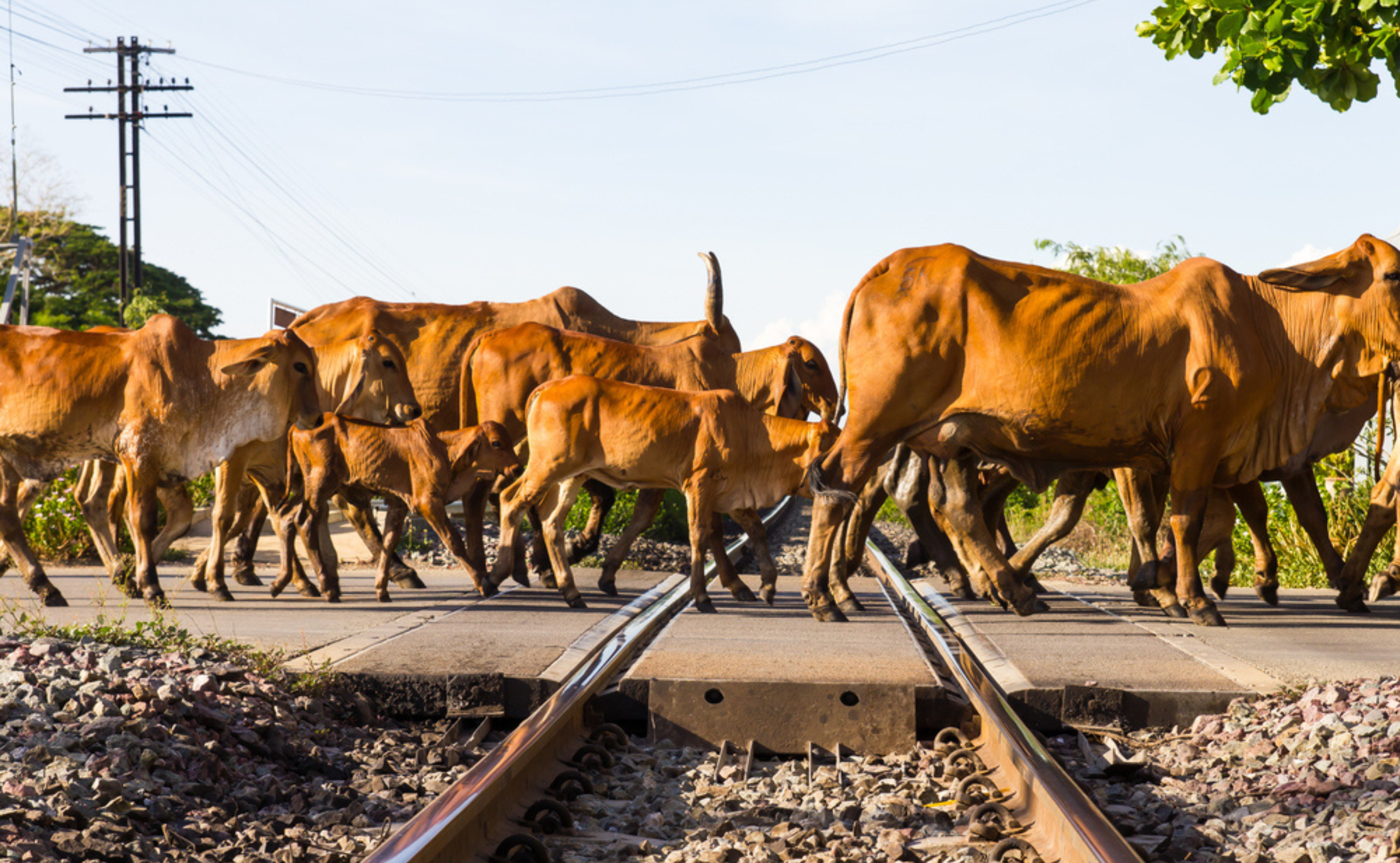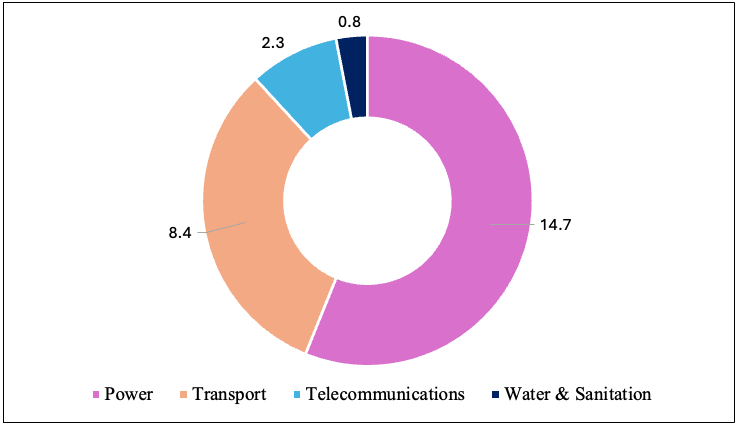
Infrastructure is vital for development and growth, creating services like water, electricity, transport, and communication for households and industries. It also acts as an intermediate input in production, boosting the productivity of land, labour, and capital. Since the 1997 Asian financial crisis, many Asian economies have used infrastructure investment to stimulate demand, as it “crowds in” private investment, enhancing capital returns and growth (Wang 2002).
Infrastructure can be classified as either linear or spatial. Linear infrastructure is defined by its “straight form, such as roads, railways, powerlines, and canals” (UN Environment Programme 2020). Unlike spatial infrastructure such as buildings and reservoirs, which expand in multiple directions rather than along a single axis, linear infrastructure stretches across landscapes, often intersecting various ecosystems and human settlements. It serves as a backbone for connectivity and resource distribution, facilitating transport, communications, and energy transmission. However, its elongated nature also creates a “borderline effect” (Department of Roads, Nepal 2017), affecting land use patterns, fragmenting habitats, and influencing socioeconomic interactions along its path.
Developing Asia requires $26 trillion in infrastructure investment from 2016 to 2030, or $1.7 trillion annually, to sustain growth, reduce poverty, and address climate change (ADB 2017). Excluding climate change mitigation and adaptation costs, this requirement falls to $22.6 trillion, or $1.5 trillion annually (ADB 2017). Thus, integrating climate change considerations into infrastructure is expected to cost $3.4 trillion over this period (Figure 1).
Figure 1: Component-wise Investment Required for Developing Asia ($ trillion)

Source: ADB (2017).
Transport accounts for approximately 32% of total infrastructure requirements. Transport corridors increase human activity such as commerce, tourism, and hunting, placing additional pressure on wildlife. Roads and railways contribute to habitat fragmentation and wildlife mortality. By 2050, global road networks are expected to expand by 25 million km, a 60% increase from 2010 levels (Dulac 2013). Railways are projected to grow by 335,000 km of track, with most expansion occurring in developing nations (Dulac 2013). Roads have already fragmented ecosystems into 600,000 patches, more than half of which are smaller than 1 km², posing a threat to wildlife (Wang et al. 2022). The People’s Republic of China’s (PRC) Belt and Road Initiative, launched in 2013, has significantly accelerated the expansion of linear transport infrastructure (LTI) in Asia, with plans to invest more than $5 trillion to connect 65 countries.
Negative Impacts of Linear Infrastructure on Biodiversity
Asia is home to more than 12,300 Protected and Conservation Areas, including 49 natural World Heritage Sites and 298 Ramsar Sites. Despite a slowdown, over 1,000 new protected areas have been established over the past 6 years.
Linear infrastructure creates barriers to wildlife movement, causing habitat fragmentation, population isolation, and genetic bottlenecks. These barriers can be literal (preventing species from crossing) or functional (creating unfamiliar and hazardous environments), making it difficult to sustain healthy populations (UNEP CMS 2015). Wild animals need to move for survival, whether to find food, water, mates or migration routes (USAID 2022). The “effect zone” extends beyond the physical footprint of the infrastructure, further restricting animal movement (USAID 2022).
The construction and maintenance of roads, railways, and canals impact wildlife and natural areas by causing habitat loss and fragmentation. These infrastructures generate noise, light, and off-site damage, affecting low-mobility species that are particularly sensitive to habitat destruction (Ament, Clevenger and van der Ree 2023). Infrastructure also exposes remote forests to illegal activities such as logging, hunting, and mining, especially in areas with weak law enforcement (Ament, Clevenger and van der Ree 2023). In the Brazilian Amazon, illegal roads outnumber legal ones by almost three to one, with nearly 95% of deforestation occurring within 5.5 km of these roads (Barber et al. 2014).
LTI disrupts behaviours crucial for survival and exposes species to pollution, stress, and reduced reproductive success (UNEP CMS 2015). Its expansion will harm species through: (i) mortality, due to collisions with vehicles or trains; (ii) aversion, caused traffic and noise that prevent crossings; (iii) movement barriers, where infrastructure physically blocks wildlife; and (iv) sensory disturbance and chemical effects due to pollution (Ament et al. 2021).
In the 13 countries where endangered Asian elephants live, roads and railways are fragmenting habitats and movement corridors, leading to increased collisions and fatalities. India recorded 186 elephant deaths caused by trains over 10 years, while in the PRC, elephants were forced to migrate 500 km from the Xishuangbanna Reserve (Ament et al. 2021). These incidents highlight the urgent need to better understand the impact of human development on habitat connectivity and implement measures to mitigate future conflicts.
Unlike high-deforestation countries such as Indonesia, India faces a lower risk from forest clearing, but threats to landscape connectivity remain significant (Ghosh 2023). In contrast to North America and Europe, where infrastructure expansion occurs largely within existing corridors, Asia is experiencing a surge in new projects, two-thirds of which could affect 350 protected areas (Ghosh 2023).
Policy and Data Gaps: Steps Toward Improved Wildlife and Infrastructure Integration
Efforts to mitigate the impact of LTI on wildlife have seen significant progress in Asian economies. In the PRC, measures include habitat surveys, route planning, road design and the construction of wildlife crossing structures (Wang et al. 2022). In response to challenges posed by the NH 44 expansion through the Pench corridor, India mandated mitigation measures such as building 13 wildlife crossings (Habib and Saxena 2024). Long-term monitoring of these structures revealed a 240% increase in wildlife usage, facilitating safer movement for at least 23 mammal species and setting a precedent for projects such as the Delhi-Dehradun Expressway (Habib and Saxena 2024). These initiatives highlight the importance of integrating conservation into infrastructure development to balance ecological and economic needs.
However, significant gaps remain in the policy and data frameworks needed for the effective management of LTI in conservation landscapes. There is a lack of comprehensive national-level roadkill data and systematic research on LTI’s impact on animal populations and behaviour. Inadequate long-term monitoring and the absence of standardised codes for wildlife crossing structures reduce their effectiveness (Wang et al. 2022).
Furthermore, in India, for example, the field of road ecology is still developing, and LTI planning often prioritises development over conservation. Addressing these gaps requires robust research, standardised guidelines and a proactive approach to integrating biodiversity concerns into infrastructure planning.
An adaptive management framework should be adopted to integrate biodiversity conservation into LTI development, focusing on ecosystem and multi-species studies informed by global road ecology research and innovative technologies (Habib and Saxena 2024). Additionally, strategic environmental assessments and regional impact assessments should be introduced to address the cumulative impact of infrastructure projects (Habib and Saxena 2024). These assessments can refine environmental impact evaluations by tackling broader ecological concerns at the regional level while focusing on project-specific issues (Government of Sri Lanka 2011). Multiple projects should be coordinated within the same corridor to optimise infrastructure development through inter-agency cooperation (Habib and Saxena 2024). Incorporating costs for mitigation and biodiversity offsets in project budgets is essential to prevent cost overruns (Habib and Saxena 2024).
Finally, road ecology surveys are crucial for identifying roadkill hotspots and determining optimal locations for mitigation structures, ensuring conservation measures are integrated from the project’s inception. By mapping proposed road and railway alignments over forested areas using GIS, potential corridor fragmentation can be detected and addressed through regulatory interventions.
References
Asian Development Bank (ADB). 2017. Meeting Asia’s Infrastructure Needs. ADB.
Ament, R., A. Clevenger, and R. van der Ree. 2023. Addressing Ecological Connectivity in the Development of Roads, Railways and Canals. IUCN.
Ament, R., S. K. Tiwari, M. Butynksi, B. S. Chen, N. Dodd, A. Gangadharan, N. Jayasinghe, A. Laur, G. Oppler, W. E. Phin, R. van der Ree, and Y. Wang. 2021. Protecting Asian Elephants from Linear Transport Infrastructure: The Asian Elephant Transport Working Group’s Introduction to the Challenges and Solutions. Asian Elephant Transport Working Group (AsETWG), IUCN WCPA Connectivity Conservation Specialist Group.
Barber, C. P., M. A. Cochrane, C. M. Souza, and W. F. Laurance. 2014. Roads, Deforestation, and the Mitigating Effect of Protected Areas in the Amazon. Biological Conservation 177: 203–209.
Department of Roads, Nepal. 2017. Guidelines for Construction of Eco-Friendly Linear Infrastructures. https://dor.gov.np/uploads/circular/circular_1505633979_65.pdf
Dulac, J. 2013. Global Land Transport Infrastructure Requirements: Estimating Road and Railway Infrastructure Capacity and Costs to 2050. International Energy Agency.
Ghosh, S. 2023. Helping Wildlife Navigate Road and Railway Infrastructure. 3 January. Mongabay. https://india.mongabay.com/2023/01/helping-wildlife-navigate-road-and-railway-infrastructure/
Government of Sri Lanka. 2011. Environmental Management Framework: Ecosystems Management and Conservation Project. Ministry of Environment and Natural Resources, Government of Sri Lanka.
Habib, B., and A. Saxena. 2024. Connectivity Conservation Through Linear Infrastructure Mitigation: Taking Small Steps for a Giant Conservation Effort. Journal of Wildlife Science 1(2): 62–68.
UN Environment Programme. 2020. Addressing the Impact of Linear Infrastructure on Migratory Species. Convention on the Conservation of Migratory Species of Wild Animals (CMS), UN Environment Programme. https://www.cms.int/sites/default/files/publication/infrastructure_fact_sheet_oct2020_part2.pdf
UNEP CMS. 2015. Guidelines for Addressing the Impact of Linear Infrastructure on Large Migratory Mammals in Central Asia. Convention on the Conservation of Migratory Species of Wild Animals (CMS), UNEP.
USAID. 2022. Building a Foundation for Linear Infrastructure Safeguards in Asia. USAID.
Wang, E. C. 2002. Public Infrastructure and Economic Growth: A New Approach Applied to East Asian Economies. Journal of Policy Modeling 24(5): 411–435.
Wang, Y., J. Qu, Y. Han, L. Du, M. Wang, Y. Yang, G. Cao, S. Tao, and Y. Kong. 2022. Impacts of Linear Transport Infrastructure on Terrestrial Vertebrate Species and Conservation in China. Global Ecology and Conservation 38.









No comments yet.